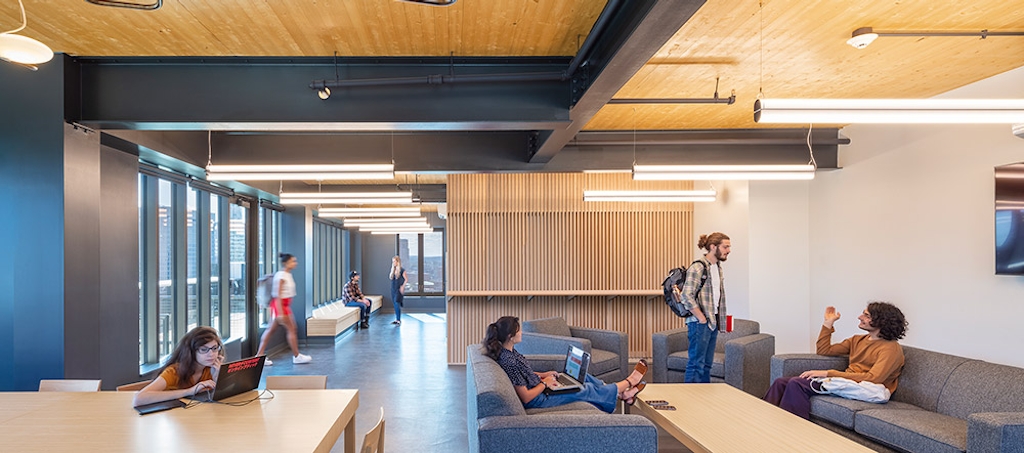New England Forestry Foundation’s initiatives continue to drive forward innovation in conservation and sustainable forestry. Keep reading for three key programs’ progress reports from fiscal year 2018-2019. You can also get an in-depth update about our landowner outreach initiative by clicking here.
Pooled Timber Income Fund
NEFF is poised to break new ground in land conservation with the launch of the Pooled Timber Income Fund (PTIF), which took place in early 2019. Both The Nature Conservancy (TNC) and NEFF have leased land to the fund; this participation shows support for the PTIF from trusted nonprofit organizations and helps give it recognition as a viable conservation tool. Making a pool of TNC and NEFF lands available from the start will also help ensure income to participating landowners even in the PTIF’s early stages.
Currently, two individual landowners are in the process of joining the PTIF and due diligence to bring their properties into the fund is underway. With the back-office systems in place for the PTIF, the program is ready to grow and assist landowners who would like to conserve their land with the benefit of a steady annual lifetime income. Other land trusts have expressed interest in participating in the PTIF, and NEFF has partnered with the Oregon Community Foundation to create a bi-coastal effort in spreading this new conservation tool across the nation.
In the coming year, NEFF will continue its public outreach efforts in order to bring more land donors into the PTIF. An informative PTIF brochure is now in production for mailings to landowners, and staff members will continue making landowner visits and giving presentations across New England. Their efforts will include the 2019 Land Trust Alliance Rally, where the PTIF will be a part of a workshop about new conservation finance ideas.
Western Maine Bid Process
NEFF is launching an innovative approach to Exemplary Forest management in the Mountains of the Dawn through its Western Maine Habitat Restoration project. NEFF and the Natural Resources Conservation Service (NRCS) will be implementing a $1.5 million Regional Conservation Partnership Program (RCPP) grant to provide private landowners in the Western Maine Mountains with partial funding to start using Exemplary Forestry techniques.
Over the past fiscal year, NEFF developed the work plan that lays out the tasks and schedule for NEFF to deliver habitat improvements to landowners, and refined the NRCS scenarios and practices to use to achieve the goals. As an example, one scenario a landowner could adopt is thinning for wildlife habitat, which has the dual purpose of increasing complexity of the structure of the forest and increasing the variety of habitats across the landscape. The technical application of the RCPP project will be overseen by NEFF Ecologist Carla Fenner, who will also serve as the NRCS liaison for the project. Fenner and NEFF Western Maine Project Coordinator Christine Parrish, who will initiate and implement Exemplary Forestry outreach and communication efforts across Western Maine’s Mountains of the Dawn, joined the NEFF team in May 2019. Both will also be responsible for additional projects outside of Maine, including working on the Build It With Wood initiative.
NEFF also completed its Habitat Analysis for Western Maine, which identifies 14 high priority habitat needs in the Mountains of the Dawn, including identifying species affected and the forest management response necessary to repair the problem. This work represents the first-ever landscape scale assessment of habitat needs combined with specific prescriptions for forestry practices to close identified gaps. The Habitat Analysis will be used to inform the RCPP effort.
One of the high priority needs identified in the analysis, for example, is the lack of large, old trees and late successional forests in the region—old trees make up just 3 percent of northern hardwood stands and 2 percent of softwood stands, yet are key to achieving a complex stand structure and associated wildlife habitat benefits.
Build It With Wood
NEFF’s Build It With Wood program seeks to advance mass timber construction in New England, and to ensure that new wood buildings use sustainably produced New England wood products. Tall wood buildings are under construction or in use around the world, using new approaches that allow lumber to be assembled into large and stunningly strong panels. These “plyscrapers” have much lower carbon footprints than comparable steel and concrete buildings, and are easier to construct in dense urban areas as they require less material, produce less noise, and contribute less to traffic congestion due to their smaller staging area.
NEFF’s Exemplary Forestry approach lies at the heart of the Build It With Wood program, aiming to ensure that wood for tall wood buildings is drawn from forests managed to maintain wildlife habitat and maximize storage of carbon in the trees of the working forest. This ties our historic expertise in forestry to the needs of 21st century society. In partnership with the University of Massachusetts and the Commonwealth of Massachusetts, NEFF is currently documenting how the climate benefits of mass timber construction are affected by the source of the timber and how it is harvested. In the months to come, we will use the results of this work to estimate the potential climate benefits of both widespread application of Exemplary Forestry and eventually the benefits of expanded mass timber construction relying on wood from forests managed to those standards.
This fall, NEFF will launch its Forest-to-Cities Climate Challenge to build a community of partners working to bring mass timber construction to our cities and to ensure it is sourced from local, sustainable wood. The challenge will seek to create informal linkages among forest landowners, manufacturers, architects, engineers, developers and investors to create a carbon value chain linking our cities back to the rural forests of the region, thereby helping connect urban audiences to the vital roles that our forests play in regional sustainability.


